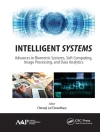A breakthrough sourcebook to the challenges and solutions for
mobile database systems
This text enables readers to effectively manage mobile database
systems (MDS) and data dissemination via wireless channels. The
author explores the mobile communication platform and analyzes its
use in the development of a distributed database management system.
Workable solutions for key challenges in wireless information
management are presented throughout the text.
Following an introductory chapter that includes important
milestones in the history and development of mobile data
processing, the text provides the information, tools, and resources
needed for MDS management, including:
* Fundamentals of wireless communication
* Location and handoff management
* Fundamentals of conventional database management systems and why
existing approaches are not adequate for mobile databases
* Concurrency control mechanism schemes
* Data processing and mobility
* Management of transactions
* Mobile database recovery schemes
* Data dissemination via wireless channels
Case studies and examples are used liberally to aid in the
understanding and visualization of complex concepts. Various
exercises enable readers to test their grasp of each topic before
advancing in the text. Each chapter also concludes with a summary
of key concepts as well as references for further study.
Professionals in the mobile computing industry, particularly
e-commerce, will find this text indispensable. With its extensive
use of case studies, examples, and exercises, it is also highly
recommended as a graduate-level textbook.
İçerik tablosu
Acknowledgments.
Preface.
1. Mobile Database System.
1.1 Introduction.
1.2 Types of Mobility.
1.3 Summary.
References.
2. Wireless Network Communication.
2.1 Introduction.
2.2 Continuous Connectivity.
2.3 Summary.
References.
3. Location and Handoff Management.
3.1 Introduction.
3.2 Summary.
References.
4. Fundamentals of Database Technology.
4.1 Conventional Database Architecture.
4.2 Database Processing.
4.3 Serialization of Transactions.
4.4 Advanced Transaction Models.
4.5 Summary.
References.
5. Introduction to Concurrency Control Mechanisms.
5.1 Introduction.
5.2 Summary.
References.
6. Data Processing and Mobility.
6.1 Introduction.
6.2 Effect of Mobility on the management of Data.
6.3 Summary.
References.
7. Transaction Management in Mobile Database Systems.
7.1 Mobile Database System.
7.2 Transaction Execution in MDS.
7.3 Mobile Transaction Model.
7.4 Execution Model Based on ACID Transaction Framework.
7.5 Pre-write Transaction Execution Model.
7.6 Mobile Transaction Model.
7.7 Data Consistency in Intermittent Connectivity.
7.8 The Consistency Model.
7.9 Weak Connectivity Operation.
7.10 A Consistency Restoration Schema.
7.11 Discussion.
7.12 Related Work.
7.13 Concurrency Control Mechanism.
7.14 Transaction Commit.
7.15 Commitment of Mobile Transactions.
7.16 Transaction Commitment in Mobile Database Systems.
7.17 Summary.
References.
8. Mobile Database Recovery.
8.1 Introduction.
8.2 Log Management in Mobile Database Systems.
8.3 Mobile Database Recovery Schemes.
8.4 Summary.
References.
9. Wireless Information Broadcast.
9.1 Introduction.
9.2 Broadcast Disk.
9.3 Broadcast Infrastructure.
9.4 Exponential Index.
9.5 Location-Based Indexing.
9.6 On-Demand Data Scheduling.
9.7 Data Dissemination System.
9.8 Summary.
References.
Glossary.
Index.
Yazar hakkında
VIJAY KUMAR, Ph D, is Professor of Computer Science and
Informatics at the University of Missouri-Kansas City. Dr.
Kumar has served as a consultant to the United Nations and Sprint
PCS and is on the editorial review board of several peer-reviewed
journals. His research interests include recovery and security in
mobile database systems, workflow on the Web, mobile computing
databases, data warehousing, and Web security.












